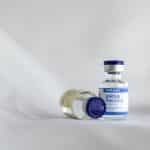Vaccine Lawyers at Pribanic & Pribanic can help if you have been injured by a vaccine
Vaccine Lawyers at Pribanic & Pribanic can help if you have been injured by a vaccine
Call Our Vaccine Lawyers Today
Free Evaluation of Vaccine Lawsuits: 800-392-4529
Call Our Vaccine Lawyers Today
Free Evaluation of Vaccine Lawsuits: 800-392-4529
“★★★★★”
Ric Tkac ~ North Versailles, Pa.
“Pribanic & Pribanic’s door was always open”
~ Client Review
“I got the highest possible settlement”
~ Client Review
Vaccine Lawyers for All Types of Applications
Vaccine Lawyers for All Types of Applications
 Vaccine lawyers at Pribanic & Pribanic can help you navigate vaccine injury. Everyday thousands of people are vaccinated against disease and illness. While rare, vaccine injuries do happen and they can be severe, debilitating, and often life-changing.
Vaccine lawyers at Pribanic & Pribanic can help you navigate vaccine injury. Everyday thousands of people are vaccinated against disease and illness. While rare, vaccine injuries do happen and they can be severe, debilitating, and often life-changing.
In many instances vaccine injuries are no one’s fault, but the vaccine lawyers at Pribanic & Pribanic understand what a burden these types of injuries are to carry and we are here to help.
Tell Us What Happened: 800-392-4529
*** NO FEE$ UNLESS YOU WIN ***
Tell Us What Happened
***NO FEE$ UNLESS YOU WIN***
Frequently Asked Questions About Vaccines:
FAQ: Are there bad reactions to vaccines? Yes. Serious reactions to vaccination can manifest as:
-
allergic reactions
-
autoimmune disease
-
blood conditions
-
nerve damage
-
brain conditions
-
Febrile seizures
-
and in some cases death
With the continuing circulation of Covid-19 and its variants, vaccines and therefore vaccine injuries, are being highlighted in public discourse. Side effects and injuries from Covid-19 vaccines do occur as well as from other routine injections.
A recently published Danish study found that the Moderna COVID-19 shot left users with a higher risk of heart complications such as myocarditis, a swelling of the heart muscle, than the Pfizer vaccine.
Unfortunately, death is also a side effect for some people after vaccination. Michigan woman’s death caused by rare Johnson & Johnson COVID vaccine side effect, autopsy report says.
Regardless of which Covid-19 vaccination is used, there is always a risk of some complication or injury as vaccines can affect different people differently. It is always shocking to hear of death in young people, but myocarditis seems to occur more in ages 12-39 than any other demographic.
While plans are underway to develop vaccines for new variants and science is continually moving forward with new developments and discoveries, risks are always present.
If you have been injured by a Covid-19 vaccine or any other vaccination don’t hesitate to contact Pribanic & Pribanic and speak with an experienced vaccine lawyer today.
FAQ: What is the National Vaccine Injury Compensation Program (NVICP)?
The National Vaccine Injury Compensation Program (NVICP) was created by Congress in 1988 as a no-fault alternative to the traditional tort system. Law requires claims for vaccine injuries to be processed in the Vaccine Injury Program prior to filing a suit. The course of filing a vaccine claim is different from many medical malpractice or personal injury claims and qualified, experienced vaccine attorneys like those at Pribanic & Pribanic can help you through the complicated process.
FAQ: Who can file a vaccine injury lawsuit?
Anyone can file a claim in the National Vaccine Injury Compensation Program regardless of age or citizenship status, as long as the effects of the injury (1) lasted for more than 6 months after the vaccination, (2) resulted in inpatient hospitalization and surgical intervention, or (3) resulted in death.
*the NVICP does not accept Covid-vaccine related claims at this time.
Vaccine cases cannot be handled in local or state courthouses. All vaccine claims must go to the U.S. Court of Federal Claims in Washington D.C.
If you have suffered a vaccine injury or are dealing with vaccine related side effects, Pribanic & Pribanic can help you get what you deserve.
FAQ: What compensation can I expect if I win my vaccine injury case?
If you win your vaccine injury case, you can receive compensation for:
-
Medical Expenses (Past and Future)
-
Pain and Suffering (Past and Future)
-
Lost Wages (Past and Future)
-
Wrongful Death cases
References:
-
National Vaccine Injury Compensation Program | Official web site of the US Health Resources & Services Administration
-
Covered Vaccines | Official web site of the US Health Resources & Services Administration
-
Vaccine Claims/Office of Special Masters
-
Moderna says booster dose of its COVID-19 vaccine appears protective vs Omicron
-
New Zealand links 26-year old man’s death to Pfizer’s COVID-19 Vaccine
-
Moderna shot had more heart risk than Pfizer’s in Danish study
Meet Our Vaccine Attorneys
Our Vaccine lawyers are helping protect your rights in Pittsburgh, Allegheny County, Armstrong County, Beaver County, Butler County, Fayette County, Greene County, Indiana County, Washington County, Westmoreland County, and throughout Pennsylvania.
FAQ: What types of vaccines exist for humans? (credit: Wikipedia)
Vaccines typically contain attenuated, inactivated or dead organisms or purified products derived from them. There are several types of vaccines in use.[38] These represent different strategies used to try to reduce the risk of illness while retaining the ability to induce a beneficial immune response.
-
Attenuated
Main article: Attenuated vaccine
Some vaccines contain live, attenuated microorganisms. Many of these are active viruses that have been cultivated under conditions that disable their virulent properties, or that use closely related but less dangerous organisms to produce a broad immune response. Although most attenuated vaccines are viral, some are bacterial in nature. Examples include the viral diseases yellow fever, measles, mumps, and rubella, and the bacterial disease typhoid. The live Mycobacterium tuberculosis vaccine developed by Calmette and Guérin is not made of a contagious strain but contains a virulently modified strain called “BCG” used to elicit an immune response to the vaccine. The live attenuated vaccine containing strain Yersinia pestis EV is used for plague immunization. Attenuated vaccines have some advantages and disadvantages. Attenuated, or live, weakened, vaccines typically provoke more durable immunological responses. But they may not be safe for use in immunocompromised individuals, and on rare occasions mutate to a virulent form and cause disease.[39]
-
Inactivated
Main article: Inactivated vaccine
Some vaccines contain inactivated, but previously virulent, micro-organisms that have been destroyed with chemicals, heat, or radiation[40] – “ghosts”, with intact but empty bacterial cell envelopes. They are considered an intermediate phase between the inactivated and attenuated vaccines.[41] Examples include IPV (polio vaccine), hepatitis A vaccine, rabies vaccine and most influenza vaccines.[42]
Avian flu vaccine development by reverse geneticstechniques
-
Toxoid
Main article: Toxoid
Toxoid vaccines are made from inactivated toxic compounds that cause illness rather than the micro-organism.[43] Examples of toxoid-based vaccines include tetanus and diphtheria.[42] Not all toxoids are for micro-organisms; for example, Crotalus atroxtoxoid is used to vaccinate dogs against rattlesnake bites.[44]
-
Subunit
Main article: Subunit vaccine
Rather than introducing an inactivated or attenuated micro-organism to an immune system (which would constitute a “whole-agent” vaccine), a subunit vaccine uses a fragment of it to create an immune response. One example is the subunit vaccine against hepatitis B, which is composed of only the surface proteins of the virus (previously extracted from the blood serum of chronically infected patients but now produced by recombination of the viral genes into yeast).[45] Another example is edible algae vaccines, such as the virus-like particle (VLP) vaccine against human papillomavirus (HPV), which is composed of the viral major capsid protein.[46] Another example is the hemagglutinin and neuraminidase subunits of the influenza virus.[42] A subunit vaccine is being used for plague immunization.[47]
-
Conjugate
Main article: Conjugate vaccine
Certain bacteria have a polysaccharide outer coat that is poorly immunogenic. By linking these outer coats to proteins (e.g., toxins), the immune system can be led to recognize the polysaccharide as if it were a protein antigen. This approach is used in the Haemophilus influenzae type B vaccine.[48]
-
Outer membrane vesicle
Outer membrane vesicles (OMVs) are naturally immunogenic and can be manipulated to produce potent vaccines. The best known OMV vaccines are those developed for serotype B meningococcal disease.[49][50]
-
Heterotypic
Main article: Heterologous vaccine
Heterologous vaccines also known as “Jennerian vaccines”, are vaccines that are pathogens of other animals that either do not cause disease or cause mild disease in the organism being treated. The classic example is Jenner’s use of cowpox to protect against smallpox. A current example is the use of BCG vaccine made from Mycobacterium bovis to protect against tuberculosis.[51]
-
Genetic vaccine
The subgroup of genetic vaccines encompass viral vector vaccines, RNA vaccines and DNA vaccines.
-
Viral vector
Main article: Viral vector vaccine
Viral vector vaccines use a safe virus to insert pathogen genes in the body to produce specific antigens, such as surface proteins, to stimulate an immune response.[52][53]
-
RNA
Main article: RNA vaccine
An mRNA vaccine (or RNA vaccine) is a novel type of vaccine which is composed of the nucleic acid RNA, packaged within a vector such as lipid nanoparticles.[54] Among the COVID-19 vaccines are a number of RNA vaccines under development to combat the COVID-19 pandemic and some have received emergency use authorization in some countries. For example, the Pfizer-BioNTech and Moderna mRNA vaccines have emergency use authorization in the US.[55][56][57]
-
DNA
Main article: DNA vaccine
DNA vaccination – The proposed mechanism is the insertion and expression of viral or bacterial DNA in human or animal cells (enhanced by the use of electroporation), triggering immune system recognition. Some cells of the immune system that recognize the proteins expressed will mount an attack against these proteins and cells expressing them. Because these cells live for a very long time, if the pathogen that normally expresses these proteins is encountered at a later time, they will be attacked instantly by the immune system. One potential advantage of DNA vaccines is that they are very easy to produce and store.
In August 2021, Indian authorities gave emergency approval to ZyCoV-D. Developed by Cadila Healthcare, it is the first DNA vaccine approved for humans.
-
Experimental
Electroporation system for experimental “DNA vaccine” delivery
Many innovative vaccines are also in development and use.
-
Dendritic cell vaccines combine dendritic cells with antigens to present the antigens to the body’s white blood cells, thus stimulating an immune reaction. These vaccines have shown some positive preliminary results for treating brain tumors[58] and are also tested in malignant melanoma.[59]
-
Recombinant vector – by combining the physiology of one micro-organism and the DNA of another, immunity can be created against diseases that have complex infection processes. An example is the RVSV-ZEBOV vaccine licensed to Merck that is being used in 2018 to combat ebola in Congo.[60]
-
T-cell receptor peptide vaccines are under development for several diseases using models of Valley Fever, stomatitis, and atopic dermatitis. These peptides have been shown to modulate cytokine production and improve cell-mediated immunity.
-
Targeting of identified bacterial proteins that are involved in complement inhibition would neutralize the key bacterial virulence mechanism.[61]
-
The use of plasmids has been validated in preclinical studies as a protective vaccine strategy for cancer and infectious diseases. However, in human studies, this approach has failed to provide clinically relevant benefit. The overall efficacy of plasmid DNA immunization depends on increasing the plasmid’s immunogenicity while also correcting for factors involved in the specific activation of immune effector cells.[62]
-
Bacterial vector – Similar in principle to viral vector vaccines, but using bacteria instead.[49]
-
Antigen-presenting cell[49]
While most vaccines are created using inactivated or attenuated compounds from micro-organisms, synthetic vaccines are composed mainly or wholly of synthetic peptides, carbohydrates, or antigens.










